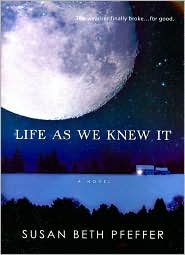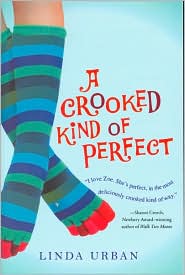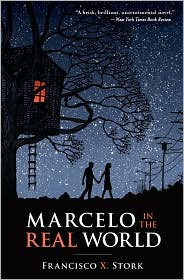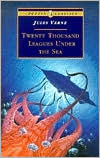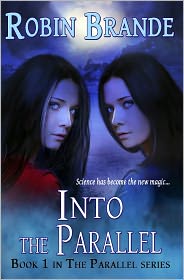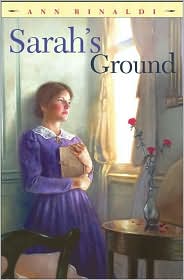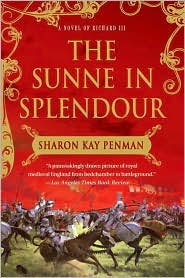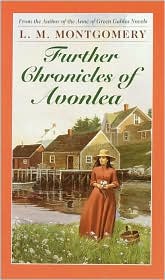
Further Chronicles of Avonlea. L.M. Montgomery. 1920/1989. Bantam Classics. 200 pages.
I love L.M. Montgomery. I do. I just love, love, love her books--her novels and her short stories. Chronicles of Avonlea and
Further Chronicles of Avonlea are short story collections set on Prince Edward Island during Anne's time. (I get the impression that these stories are set around the time of Anne of Avonlea, Anne of the Island, etc. She has NOT married Gilbert yet.*)
There are fifteen short stories:
Aunt Cynthia's Persian Cat
The Materializing of Cecil
Her Father's Daughter
Jane's Baby
The Dream-Child
The Brother Who Failed
The Return of Hester
The Little Brown Book of Miss Emily
Sara's Way
The Son of His Mother
The Education of Betty
In Her Selfless Mood
The Conscience Case of David Bell
Only a Common Fellow
Tannis of the Flats
This collection features one of the best, best, best short stories, one that practically brings me to tears each and every time: The Brother Who Failed. There is a lot of variety in the stories. Comedy and tragedy and everything in between.
Aunt Cynthia's Persian Cat is the charming story of two sisters, Sue and Ismay, who absolutely hate their aunt's cat, Fatima. But the two are pressured into taking care of the cat while their aunt goes on holiday. One day the cat goes missing, and, well the two are at a loss to know what to do about it. They have to have a Persian cat--the real Fatima or not--to give to their aunt. But how will they find one that is a close enough match...and how will they pay for it?! Sue has been pursued by Max for many, many years. He's proposed over eleven times...he has a solution to the problem...but he wants a different answer to his twelfth proposal...
The Materializing of Cecil is another charming story--another romantic comedy. Charlotte Holmes, our heroine, is an old maid. And she wouldn't mind too terribly being an old maid if anyone had ever wanted her, courted her, etc. If she'd had an opportunity to marry but didn't. So one day--I believe on her fortieth birthday--she tells a little lie to one of the young women in the sewing circle. Before she knows it the whole room is her audience. She spins this tragic tale of a failed love affair. She invents the whole thing, of course, even gives him a name, Cecil Fenwick, and a profession, lawyer. A few months later, however, Charlotte is just shocked--and incredibly embarrassed--that a Cecil Fenwick, a lawyer, has come to town to visit his sister, Mrs. Maxwell. All the details seem to match--that's the odd part. Everyone just knows that this is Charlotte's Cecil. What will she do when she's confronted by Mr. Fenwick?!
Her Father's Daughter is a sadder story, perhaps, because of all the missed opportunities. It's the story of a broken family. Our heroine, Rachel Spencer, has never known her father, David, because her parents quarreled months before she was born. Her parents won't even talk to each other, won't even talk about one another. But Rachel feels the loss. One day she accidentally finds her father and the two share one perfect, perfect day together. She's stumbled across his home in the Cove, and he shows her his place and they talk and laugh, etc. She, of course, wants to come back again, wants to visit him now that she's found him. But he seems to know that her mother will find out about and forbid it. So he tells her not to feel guilty if she can't return, if she can't be a part of his life. Now that Rachel is grown up, now that she's getting married herself, she has a LOT to say about it. And she knows exactly what she wants for her wedding--a wedding with both parents there. Will anyone ever forget her wedding day?!
Jane's Baby isn't my favorite or best. It's about another feud--there are so many feuds it seems in Montgomery's fiction. In this case it is a fight between Miss Rosetta Ellis and Mrs. Charlotte Wheeler. I believe the two are sisters? Anyway, these two are fighting over a baby--an orphaned baby. And Miss Rosetta gets there first. She names the child Cordelia Jane. She takes her home. She loves her dearly and cares for her a few months at least. And then when no one quite expects it, Charlotte kidnaps the baby. She takes the baby home with her, renames it Barbara Jane. But she doesn't let the baby leave her sight for even a minute. She doesn't want Rosetta to have even a few seconds opportunity to get the baby back. But when the baby gets sick, Charlotte knows that Rosetta can help; she may be the only one who can help in time. Will these two women put aside their differences and let this baby have a happy home?
The Dream-Child is definitely a sadder story. It is about a couple who loses their child, David, when he is twenty months old. The two are devastated. But while the husband is deeply saddened by the loss, while he is genuinely in mourning for the child, the wife begins to lose touch with reality. Her loss--her grief, her depression--sends her to a dangerous place. She hears a 'dream-child' call to her by the sea every night. Each night she goes out searching for this child, desperate to reach him in time, fearing that her child doesn't know that his mother is searching--desperately searching--for him. So one night the two are out walking--much like every other night--but this time the crying is real. This time the couple discovers a real toddler. And he DESPERATELY needs a home--a good, safe, loving home. The wife believes that this boy is her boy, that obviously this child has been gifted to her. But the husband wants to find out the truth--where did this baby come from? who are his parents? There is a happy ending--but it is bittersweet, at least to me.

The Brother Who Failed is my favorite, favorite, favorite story of the bunch. It is about the Monroe family. The oldest brother, Robert Monroe, overhears his Aunt Isabel talking to one of his sisters, I believe, about how Robert is a failure, a disgrace to the family. Everyone else in the family has made a success of it, they are somebody. But Robert? What does Robert have going for him except the fact that he's not in debt? Robert doesn't want to believe that his whole family feels this way about him--but part of him fears it just the same. The sister "in conversation" with the mean aunt knows that Robert heard this nonsense. And so she arranges a surprise for Christmas. Readers hear from each member of the family--each brother, each sister--and their testimony speaks volumes!!!! This one is such an emotional story--a true feel-good story. I just LOVED it.
You can read the entire story online.
The Return of Hester is a short story about how an older sister, Hester, keeps her younger sister from marrying. Having turned down the love of her life once, the sister agrees to never marry him. This promise being demanded of her while Hester is dying. A few months after Hester's death, this promise is put to the test. Will she ever get her happily ever after?
The Little Brown Book of Miss Emily is a short story narrated by Anne Shirley. There's even mention of Diana! The two young women have never really "liked" Miss Emily. She's old. She's red-faced. She's cranky. How could she have ever been young? How could she have ever been beautiful? So the two are surprised when Miss Emily leaves them something after her death. This chest holds some of Miss Emily's cherished memories--including a little brown book. And the two are forced to realize how much they don't know--can never know--about the people in their lives.
Sara's Way is about a stubborn young girl, Sara, who refuses to consider marriage with the oh-so-perfect Lige Baxter, but who is more than happy to consider marriage with the down-on-his-luck Lige Baxter.
The Son of His Mother is about a mother who will NOT LET GO of her son. Not even a little bit. This woman even hates her son's dog because she sees it as competition for his love, attention, affection. This unpleasant woman demands everything from her son. He must never, ever, ever, ever, ever court a woman--must agree to never even consider marriage. It would be impossible for her to live at all if her son were to think of such a thing... This story is not my favorite or best.
The Education of Betty is an odd story. At least Betty is named Betty and not Renesmee. It's narrated by a man disappointed in love. He sees his best friend, Jack, marry his best girl, Sara. When the story opens, he just knows that Sara is the love of his life. Ten years later, Jack dies leaving Sara a single mom. He proposes again--and is refused again. But he takes an interest in Betty. He tells Sara--let me educate your daughter, let me make all the important decisions about her life, her future, let me shape her. The years go by. She grows up. She becomes a beautiful woman--very smart. Her mother is SHOCKED and a bit disappointed that her daughter has a mind and is capable of actually thinking. And her mom worries that no man will ever want her now that she's been "ruined" by thinking deep thoughts. But someone does want her, of course, do you know who?!
In Her Selfless Mood is about a selfless sister who will do anything to take care of her brother.
The Conscience Case of David Bell is the story of what happens when a revival comes to Avonlea.
Only a Common Fellow is about a not-so-common fellow who lets the woman he loves break her promise to marry him so that she can marry her one true love whom she thought was dead.
Tannis of the Flats is without a doubt the WORST story of the bunch. I thought it a horrible, horrible story. It's rich in phrases like, "There is no worse enemy in all the world than a half-breed. Your true Indian is bad enough, but his diluted descendant is ten times worse."
*L.M. Montgomery wrote and published the Anne books in this order:
Anne of Green Gables (1908)
Anne of Avonlea (1909)
Chronicles of Avonlea (1912) -- not that you have to count it as part of the Anne series, but she is a character in some of the stories
Anne of the Island (1915)
Anne's House of Dreams (1917)
Rainbow Valley (1919)
Further Chronicles of Avonlea (1920) -- again not that you have to count it, but Anne is in a few of the stories
Rilla of Ingleside (1921)
Anne of Windy Poplars (1936)
Anne of Ingleside (1939)
© 2011 Becky Laney of
Becky's Book Reviews 8:59 AM
8:59 AM
 mixagrip
mixagrip

 Posted in
Posted in


